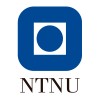
Rosuvastatin in the Long-term Treatment of Hypercholesterolaemic Subjects With Coronary Heart Disease...
HypercholesteremiaThe primary objective of this study is to evaluate that 76 weeks of treatment with rosuvastatin calcium 2.5-20 mg results in no progression of coronary artery atherosclerotic volume as measured by intravascular ultrasonography (IVUS) imaging in hypercholesterolaemic subjects with coronary heart disease (CHD).

The Intra-Drug Eluting Stent (DES) Restenosis Study
Coronary Artery DiseaseA Prospective, Randomized, Multi-Center Comparison of the Cypher Select™ Sirolimus-Eluting Stent and Balloon Re-Angioplasty for Treatment of Patients with Intra-Des Restenosis.

Trial in Subjects Undergoing Cardiac Catheterization With Planned Percutaneous Coronary Intervention...
Coronary Artery DiseaseThe purpose of this study is to provide information of the relative potency of prasugrel and clopidogrel on platelet function studies, inflammation, and myocyte necrosis in subjects undergoing elective percutaneous coronary intervention (PCI).

Effects of Celecoxib After Percutaneous Coronary Intervention
Coronary ArteriosclerosisSeveral studies including ours have reported that celecoxib improves endothelium-dependent vasodilation and reduces inflammation and neointimal hyperplasia. Our hypothesis is that celecoxib may reduce the late luminal loss after coronary stent implantation (paclitaxel-eluting stent.

PROMUS Element Japan Small Vessel Trial
AtherosclerosisCoronary Artery DiseaseA non-randomized, small vessel (SV) trial at approximately 15 sites in Japan to enroll 60 patients with a de novo lesion ≤28 mm in length (by visual estimate) in a native coronary artery ≥2.25 mm to <2.50 mm in diameter (by visual estimate). Approximately thirty patients will be randomly assigned to the angiographic subset to also undergo angiographic assessment after the 12-month clinical follow-up.

Effect of Chinese Traditional Medicine for Post Revascularization Treatment of Coronary Artery Disease...
Percutaneous Coronary Artery InterventionCoronary Artery Bypass Graft1 moreThe purpose of this study is to built the standard of Chinese Traditional Medicine test for Post percutaneous coronary artery intervention and coronary artery bypass graft,also for acute coronary syndrome,according to the multi-site、random large sample test.

Centrifugation vs. Multiple-pass Hemofiltration of the Residual Cardiopulmonary Bypass Volume
Coronary Artery DiseaseHeart Valve DiseasesTraditional cardiac surgery requires patient connection to the Cardiopulmonary Bypass (CPB) apparatus which takes over the function of the heart and lungs while the surgeon performs the necessary surgery. The residual blood left in the CPB equipment (1.5-2.0 L) is centrifuged and washed leaving only red blood cells (RBCs) suspended in a saline solution. The RBCs are reinfused into the patient as needed by the anesthesiologist. The main problem with this technique is that many of the important components of the blood such as plasma proteins and clotting factors are discarded through cell washing. This study will explore a novel method (multiple-pass hemofiltration) of processing the residual pump blood which will allow the patient to receive their own whole blood with minimum waste of important components. The newer method of processing the residual pump volume has also been termed off-line modified ultrafiltration (off-line MUF) and is similar to the process that the kidneys use to filter the blood. It is hypothesized that multiple-pass hemofiltration of the residual CPB volume will reduce the occurrence of inflammatory responses, preserve plasma proteins, and decrease allogenic blood exposure and improve clinical outcomes as compared to centrifugation.

Maximal Leg Press Strength Training Study for Coronary Artery Disease Patients
Heart FailureCoronary Artery DiseaseMaximal strength training has been shown to increase muscular strength, muscular volume and work economy. An 8 week maximal leg press training regime will be conducted on cardiac heart failure patients to evaluate whether they increase their maximal leg press strength, work economy, serum testosterone and quality of life. The study hypotheses are that: Aerobic work capacity will increase due to increased work economy, without increases in maximal oxygen uptake. Strength training will increase serum testosterone.

Sirolimus Eluting Stents in Complex Coronary Lesions (SCANDSTENT)
Ischaemic Heart DiseaseThe purpose of this study is to evaluate the clinical and angiographic outcome of implantation of stents eluting or not eluting Sirolimus in patients with complex coronary artery lesions suitable for percutaneous coronary intervention.

Radial Artery Versus Saphenous Vein Patency (RSVP) Study
Coronary ArteriosclerosisThe purpose of this study is to determine whether the radial artery (artery in the arm) or saphenous vein (vein in the leg), when used as bypass grafts for coronary artery bypass surgery, have a greater patency rate (degree of opening)at 5 years after surgery.
